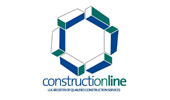Floor Insulation
Floor Insulation
I’m Andy Parkin Managing Director of the Multi-Award Winning Speed Screed, and today I would like to discuss floor insulation.
Floor insulation is a building regulation requirement for most homes.
The effective solution for your building to resist heat loss is to install floor insulation.
Understanding Types Of Floors
Before we go deep into floor insulation, it’s important that you understand the types of floors. There are two main types of floors.
- Suspended Floors
- Solid Floors
Insulating Suspended Floors
The first order of business is to identify whether you have a suspended floor or not. If there is a void underneath the floorboards itself, you have got yourself a suspended floor (timber suspended floor). Suspended floors cause a lot of heat loss, without insulation.
Suspended beam and block floors, will require damp proof membranes and insulation.
Insulating Solid Floors
When it comes to solid floors, they are not as prone to losing heat. Solid floors naturally offer more insulation than suspended floors. As there are no voids, solid floors hold more heat and don’t let it escape as well. However, to meet building regulations there is a need for insulation, either under the concrete floor slab or between the concrete slab and a floor screed.
Moisture always needs to be controlled and a damp proof membrane is essential.
Floor Insulation Types
There is a wide range of floor insulation products on the market, made from different materials, and all with different thermal resistance and strength.
R-Values
Floor insulation’s resistance to conductive heat flow is measured by its thermal resistance or R-value. Simply the higher the R-value, the great the insulating properties. The thicker the insulation you have, the R-value will increase proportionally.
The R-value varies from product to product, so please bear this in mind when targeting a specific u value for your build.
EPS
Expanded polystyrene, better known as EPS, is manufactured using small beads of foam. Heat is used to expand the beads and bond them together, thus creating a closed-cell structure. Produced in a variety of strengths, it can also be cut specifically to your required depth. Which is very useful when used as a void fill. EPS is very much the “budget” brand of insulation.
XPS
Extruded polystyrene is a closed cell structure which has a smooth surface on all sides as opposed to EPS insulation which has more of a texture to it from the cells. Due to the smooth nature of the boards, this prevents water from penetrating through.
PIR
Commonly known as “rigid boards” a PIR board normally is faced with aluminium foil. This foil provides extra insulation properties, thus giving improved thermal retention.
Insulation slabs
Made of flexible materials, they are normally lightweight and trap the heat within the structure. Rockwool is an example. Often used in between timber joists, and on top of concrete.
I hope that has given you an overview of floor insulation, however, if you would like u value calculations, or just general advice, please contact us, we love to help.
Our Accreditations
About Speed Screed
Speed Screed Limited was founded on the key principle of providing first-class customer service. It has since built itself an impressive reputation for delivering high-quality projects across the United Kingdom.
The company’s success is built on its belief in quality work, attention to detail, on-time completion, strong working partnerships and the recruitment of top-level staff. about us >








